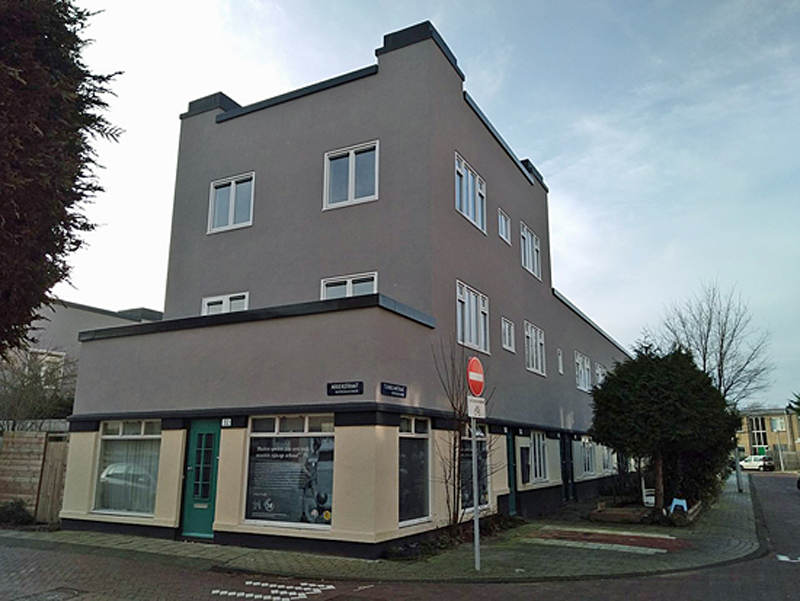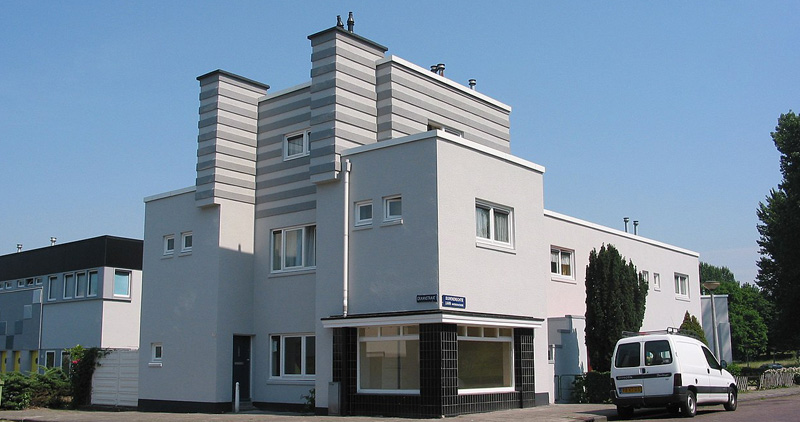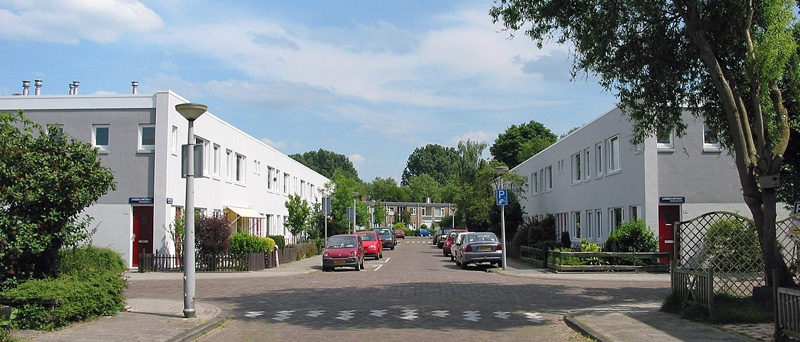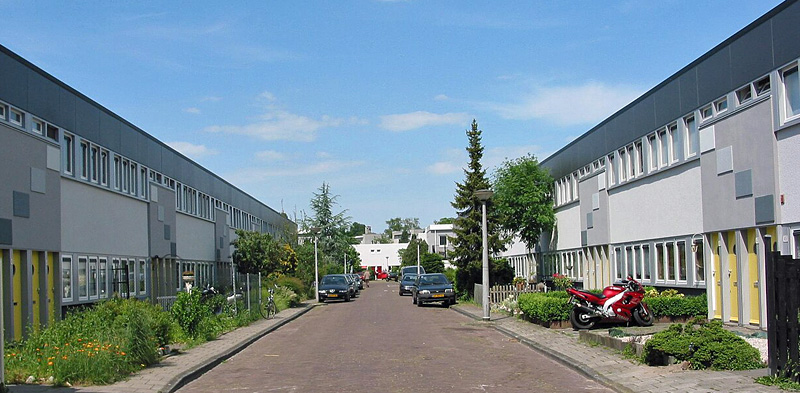Betondorp birthplace of soccer-player Johan Cruijff
Tuindorp Watergraafsmeer is a neighbourhood in East Amsterdam better known as Betondorp. birthplace of the legendary soccer player Johan Cruijff (1947-2016). The district is located between the Kruislaan, Middenweg, Ringweg-Oost and Weespertrekvaart. This former working-class neighborhood was built between 1923 and 1925. During construction, architects and builders experimented for the first time with concrete construction hence the name: beton is the Dutch word for concrete. Half of the houses in the neighbourhood were built with bricks, the other half were made of concrete. The centre of the quarter is a square, the Brink. Surrounded by houses, shops, a library and a club building, the district was more or less self-sufficient. Narrow streets, one-storey houses with gardens emphasized the village character.

Birthplace of Johan Cruijff
The most important sight in Betondorp is at Akkerstraat 42: the birthplace of Johan Cruijff. Although it is a private residence and not open to the public, it is well worth for football fans to see the house where one of the greatest footballers of all time grew up.
Cruijff lived here from 1947, the year he was born, until 1959. It is a small house with only two bedrooms.
His parents owned a greengrocer’s shop. This is clearly visible because there are two large shop windows on either side of the front door.
Until 1996, opposite Betondorp was the Stadium De Meer, where Cruijff kicked many a ball. This was Ajax’s first official stadium. Nowadays, a residential area is on the site of the stadium and Ajax now plays in the Arena.
The Construction of Betondorp
Betondorp was created after the First World War when there was a great shortage of affordable housing. Concrete was a cheap material and concrete houses were quick to build. Another reason was that there was a scarcity of bricks.

Betondorp was built in new architectural styles such as Cubism and Functionalism. This was remarkable because elsewhere in Amsterdam buildings were still the style of the Amsterdam School. Another novelty was that a water treatment plant was installed in the district so that the waste water was purified before it ended up in the environment.

Agricultural Streets Names
Betondorp is laid out in a star shape around the Brink. The streets have village and agricultural names such as Akkerstraat (Field street), Egstraat (Harrow Street), Graanstraat (Grain Street), Oogststraat (Harvest Street), Veeteeltstraat (Animal Husbandry Street), and Landbouwstraat (Agricultural Street). The houses were intended to house skilled workers and civil servants.
Betondorp has been a protected cityscape since November 2022 due to the special cultural-historical character of the district.

Jewish Betondorp
A relatively large number of Jewish families lived in Betondorp because many homes in the Jewish quarter were declared uninhabitable in the 1920s. In 1928, a synagogue was opened in the Tuinbouwstraat (Horticulture Street), there were also many Jewish owned shops. The synagogue was demolished in 1960.
Next article Tuindorp Frankendael, Jerusalem, East Amsterdam



